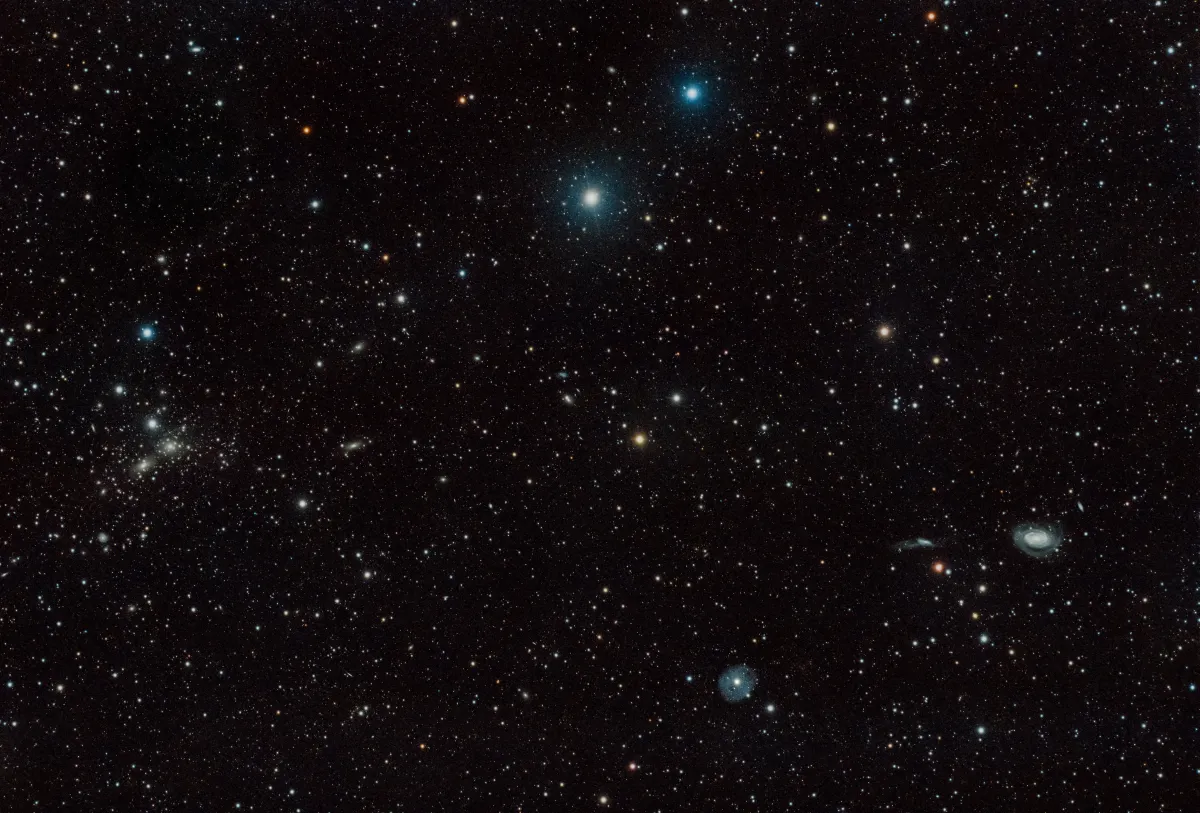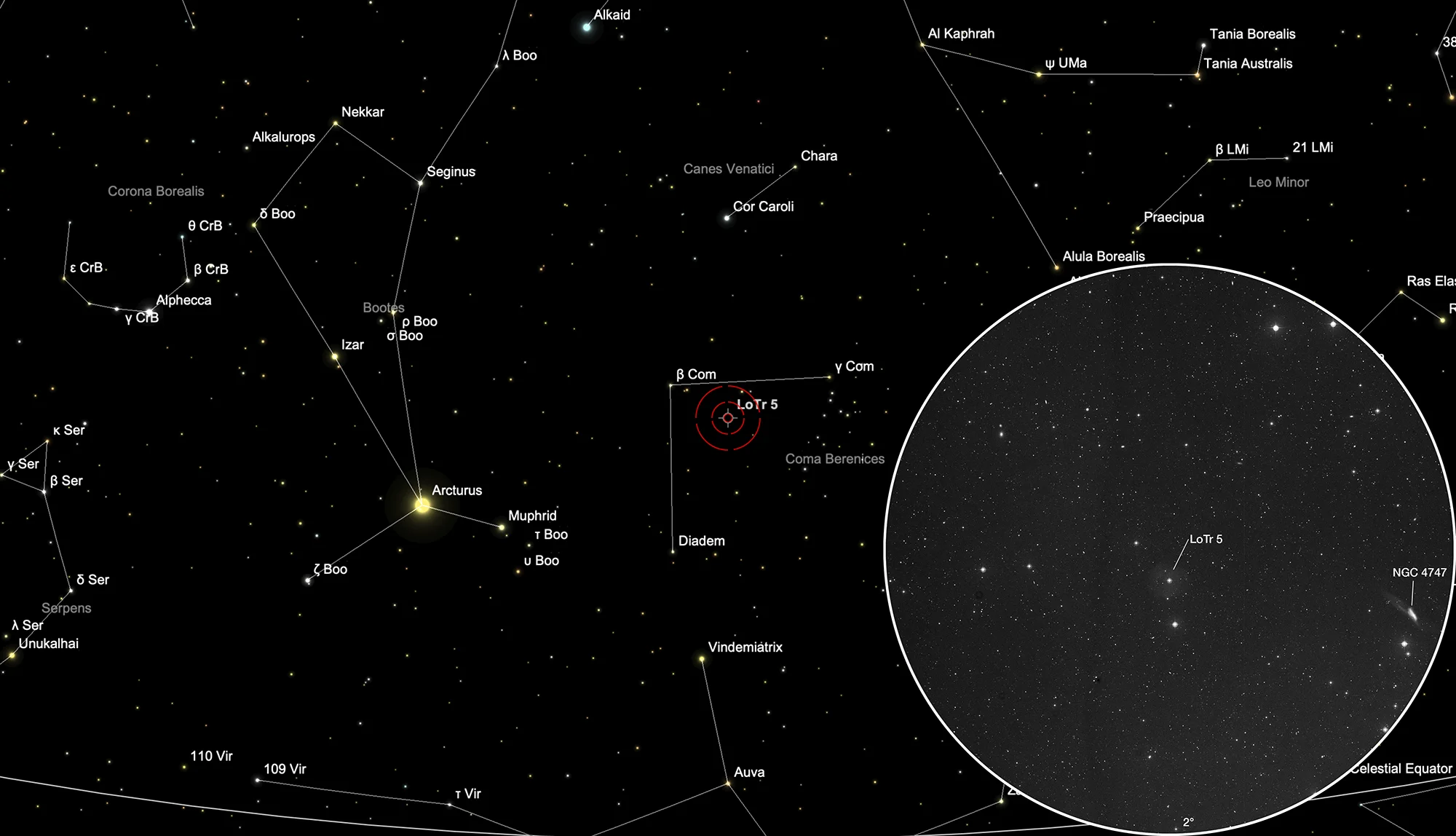Planetary Nebula Longmore-Tritton 5

History
This planetary nebula was discovered 1980 by A. J. Longmore and S. B. Tritton on photo plates made with the 1.2 m UK Schmidt Telescope in New South Wales, Australia. It was listed as fifth in a list of 11 newly discovered nebulae and is hence referred to as Longmore-Tritton 5 or short: LoTr 5. They described it as «a very large and very faint non-uniform disk, slightly brighter towards the centre. Two members of a distant group or cluster of galaxies can be seen trough the nebula.» [651]
Physical Properties
LoTr 5 is located just 1.5° ways from the north galactic pole and therefore the planetary nebula with the highest galactic latitude. Modelling shows that is expanding asymmetrically and shows some form of bipolar structure with the axis inclined around 17° to the line of sight.
The central star IN Comae Berenices (SAO 82570, HD 112313, BD +26°2405) has a visual magnitude of 8.88 mag and is a fast-rotating G5 giant of luminosity class III-IV with a rotational period of 5.9 days. A long-term brightness variation with a period of ~7.2 years results from an orbiting low mass M5 companion star. [652, 653] Gaia DR3 distance is 455 pc. [145]
| Designations | PN G339.9+88.4: LoTr 5, PK |
| Right Ascension (J2000.0) | 12h 55m 34s d |
| Declination (J2000.0) | +25° 53' 28" d |
| Dimensions | 525." (optical) |
| Distance | 0.40 kpc |
| Expansion Velocity | 27. (O-III) km/s |
| C-Star Designations | AG 26 1312, AG82 149, BD 26 2405, HD 112313, IN Com, SAO 82570 |
| C-Star Magnitude | V: 14.9 |
| C-Star Spectral Type | sdO + G5 III |
| Discoverer | LONGMORE et al 1980 |
Finder Chart
The planetary Nebula LoTr 5 is located in the constellation Coma Berenices. The best observation time is December to September, when it is highest at night.
